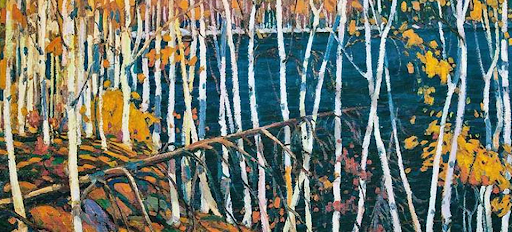Amberle Lim - Canada
- lilcorrespondents
- Feb 13, 2022
- 3 min read
Culture: A Lens into Canada’s Evolution in Visual Art
The historical origins that have shaped Canada’s distinct culture to many is noticeable through the various visual pieces Canadians have honoured from the beginning. From sculptures to paintings, these pieces have existed throughout history and thus contributed to the many renowned visual artwork Canadians are familiar with. It is important to note that Canada’s art is a fusion of the different cultures that have continued to influence the country’s dynamics in many facets. In the 20th century, Canadian artwork began to diversify and scholars began to incorporate valuable pieces of work from the native Indigenous groups and Inuit to create masterpieces that included borrowed elements from Western traditions.
Undoubtedly, painting has been the prime focus of many Canadian artists from the arrival of Europeans and their styles have greatly evolved from these roots. In the mid-19th century, Paul Kane, an immigrant from Ireland, moved across Canada and painted several different canvases that portrayed Canadian landscapes and the livelihoods of Indigenous people, fur traders, and colonists. At the same time, Cornelius Krieghoff, an artist of German descent, decided to paint over 2,000 canvases of anecdotal scenes in Quebec; his paintings introduced new techniques to the Canadian scene and inspired Canadian artists of the time. When the Dominion of Canada was finally created in 1867, the world of art shifted greatly and artists tried to create pieces that were unlike work that was heavily attached to European American styles. Infamous groups of painters sought to develop a national form of painting by emulating work similar to those of Tom Thomson. At this time, the Group of Seven was created and founding members, such as Emily Carr, depicted visuals that encapsulated the lives of Indigenous Northwest Coast in her art. After the 1930s, Canadian art evolved from surrealism — a cultural movement that developed in Europe as a result of World War I — and emphasis on structure and colours was incorporated into our contemporary art. Despite the many changes to technique and style, landscape remained the popular theme chosen by many painters, whether it reflected a traditional or an avant-garde style.
Sculpting was and still has not been popularized or pursued by many Canadian artists, however, famous pieces of artwork were carved figures made of wood, bronze and stone. Artists challenged the typical styles that were done elsewhere and looked towards sculptural genres of earth art and minimalism. Finally, in the mid 1970s to 1980s, a new tradition of sculpture developed to create pieces that drew inspiration from abstract art, thus influencing the many modern buildings currently found throughout the country. While many questioned the nature of art, the Group of Seven’s rise to prominence contributed greatly to many pieces of Canadian art. Infamously known as the Algonquin school, this organization of self-proclaimed artists are accredited for their works that are identified for their bright colours, expressionism, and simple yet highly dynamic forms.

Group of Seven Members
Members of the Group of Seven at the Arts & Letters Club in Toronto, clockwise from the left: A.Y. Jackson, Fred Varley, Lawren Harris, Barker Fairley, Franz Johnston, Arthur Lismer and J.E.H. Macdonald. (courtesy Art Gallery of Ontario)
The Group of Seven refrained from being restricted by the constraints of 19th-century naturalism and attempted to create an independent relationship between art and nature. The group shifted their focus away from similitude —the imitation of natural effects — and portrayed their feelings in their work. Ultimately, their pieces mirrored images of the North and this approach led to the creation of images that became the hallmark to their name.
Canadian artwork would not be complete without the mention of the Indigenous people. Post- contact art are the main surviving pieces that have been customarily divided based on the early contact period, however, continue to portray the richness of First Nation history. The art of the Mi’kmaq and Maliseet of Nova Scotia and New Brunswick are noted for their moose hair embroidery, porcupine quillwork, sewn hides and textile clothing. Glass beads were introduced by European traders and Indigenous women used them as substitutes for quills and moose hair. The use of beads, with their various colours and sizes inevitably changed the character of Mi'kmaq design.
The Ojibwa situated in subarctic Ontario and Manitoba have been credited for many distinctive art forms. Similar in technique, quillwork, beadwork on clothing, and basketry were created in both geometric and floral patterns. As well, sacred art embodied specific meanings and contributed to the preservation of their culture for generations to come. Many of these pieces have been kept in reserves and displayed in museums to exemplify the effects on contact with these contemporary pieces passed down from elders.
- Amberle Lim - Canada

“Moccasin telegraph” - traditional Mikmaq art

Native Canadian Art Spirit Wolf" by Jim Oskineegish - Anishinaabe | Native Canadian Arts
Article Sources:








Comments